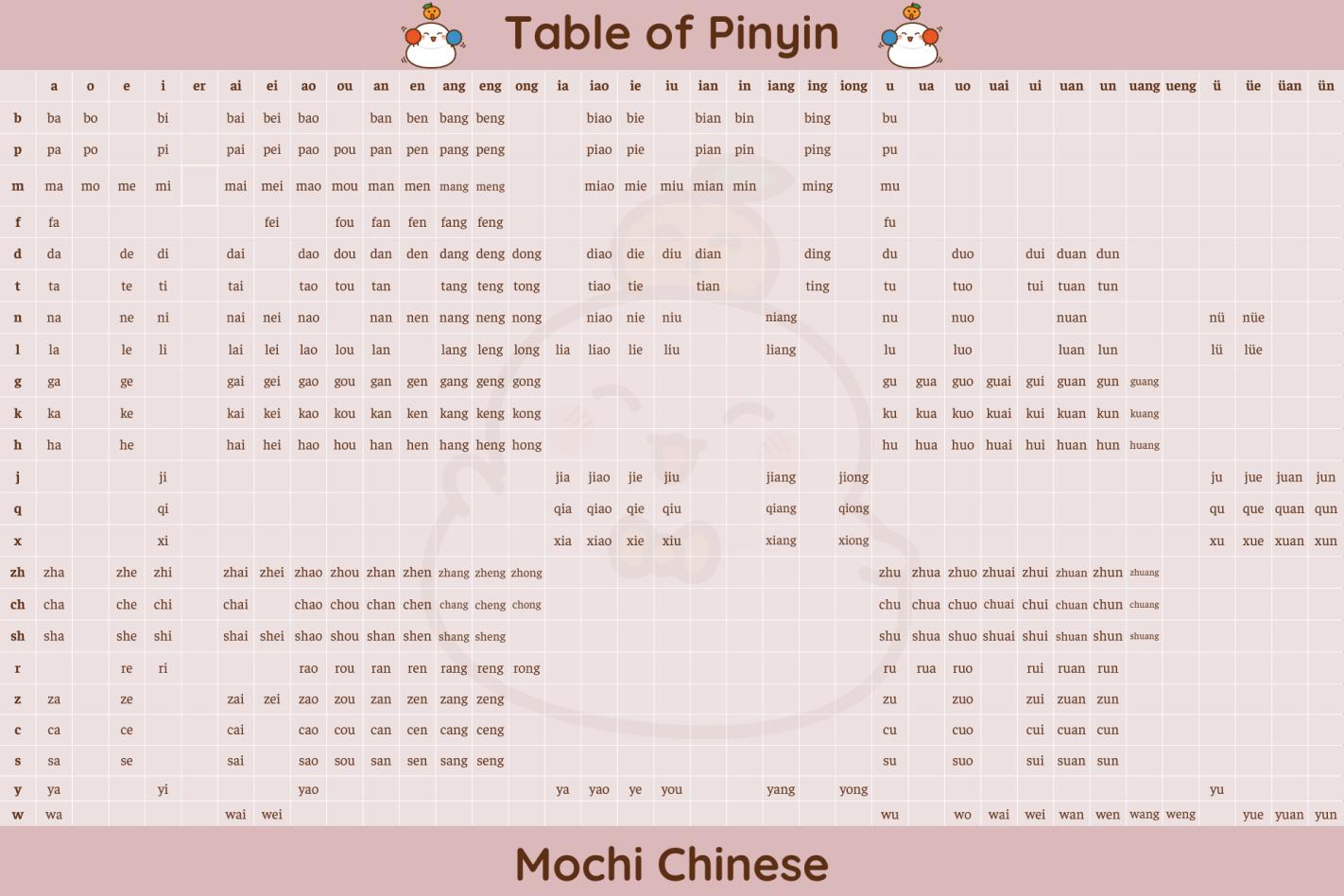
3 steps to start learning Chinese effectively
Learning Chinese Alphabet Pinyin
If you're diving into the world of Chinese language learning, mastering Pinyin is your first step to success! Start by familiarizing yourself with the basic sounds and tones. Practice writing and pronouncing each Pinyin syllable until it becomes second nature.
The Chinese phonetic system consists of 21 initial sounds, 36 final sounds, 4 main tones and one neutral tone. Make sure you know how to pronounce them accurately. You can check out the instructions Learn Chinese alphabet pinyin step by step right away.

Learn Basic Vocabulary
Starting with basic vocabulary is the perfect way to kick off your learning Chinese journey! It lays a strong foundation and boosts your confidence as you navigate the language. Plus, mastering these essentials sets you up for success in more advanced learning down the road.
Let’s get started with 100 basic Chinese vocabulary words now
To remember words better, try using the Spaced Repetition method. It's like a smart way to study that helps things stick in your mind. Spaced Repetition is the most effective and efficient technique for retaining information. Therefore, by implementing this method, Mochi Chinese will help you analyze your study history and send reminders when it's the golden time to review. So, you'll review right words at just the right times, making learning a breeze!
Immerse Yourself in Chinese
Immersion pushes you out of your comfort zone and encourages you to communicate in Mandarin Chinese, even if you make mistakes. Over time, this boosts your confidence and willingness to engage with others in Chinese.
Start by listening to and watching things you enjoy, such as cartoons, short films, podcasts, reading, and learning more about Chinese culture. This way, you'll nurture your listening and reading skills in Chinese daily, increasing your enjoyment and motivation to conquer the language.
Additional tip
Learning Chinese can be an exciting yet challenging endeavor, especially for beginners. Here are some practical pieces of advice to help beginners start their journey in learning Chinese effectively:
Practice Regularly
Consistency is key in language learning. Try to practice Chinese every day, even if it's just a few minutes. In 5 minutes, you can complete a lesson on a specific topic (about 8-10 vocabulary words) with Mochi Chinese. After that, you just need to wait for a notification reminding you that it's the optimal time to review the vocabulary. The division of lessons by topic and the smart, optimal scheduling of review times help you easily establish and maintain a habit of learning vocabulary. This gradually improves your Chinese proficiency each day.
Focus on Tones
Chinese is a tonal language, where the tone of a word can change its meaning entirely. Spend extra time practicing the four main tones and the neutral tone in Mandarin. Use tone drills and listen carefully to native speakers to master this aspect.
Learn Characters with Radicals
Understanding the structure of Chinese characters, particularly radicals, can make learning characters more manageable. Radicals often give clues about the meaning or pronunciation of a character. Break down characters into their radicals to memorize them more effectively.
Be Patient and Stay Motivated
Learning Chinese can be daunting due to its unique script and tones. Set realistic goals and celebrate small victories to stay motivated. Such as "learn 10 new words daily" or "have a 5-minute conversation in Chinese each week." Setting and achieving small goals can provide a sense of progress and motivate you to continue learning. Remember that language learning is a gradual process, and perseverance is key.
For English learners
MochiVocab - Học tiếng AnhMochi Listening - Luyện nghe IELTSMochi Dictionary - English Dictionary for leanersMochi Dictionary - Từ điển Anh-Việt cho người học tiếng AnhMochiVideo - Learn English Online through VideoMochi Test - English Vocabulary testPractice IELTS listening by topicPractice listening to English by topicLearn English through songsLearn English through moviesLearn English through TED videosPractice listening to TOEIC according to levelFor Japanese learner
Learn Kanji & Japanese VocabularyMochikana - Learn Japanese AlphabetMochi Ultimate Japanese Learning Guideline for BeginnerLearn Japanese Online for beginnerLearn Hiragana OnlineContact Us
Email: support@mochidemy.com
Words of the day


